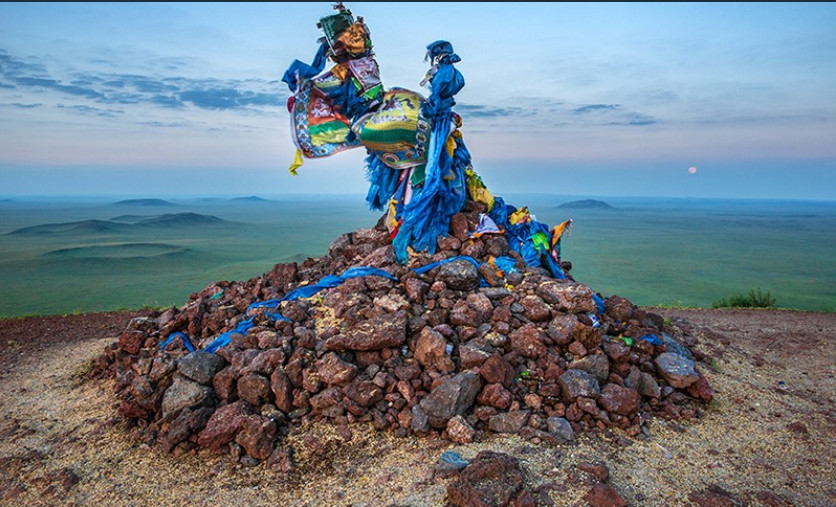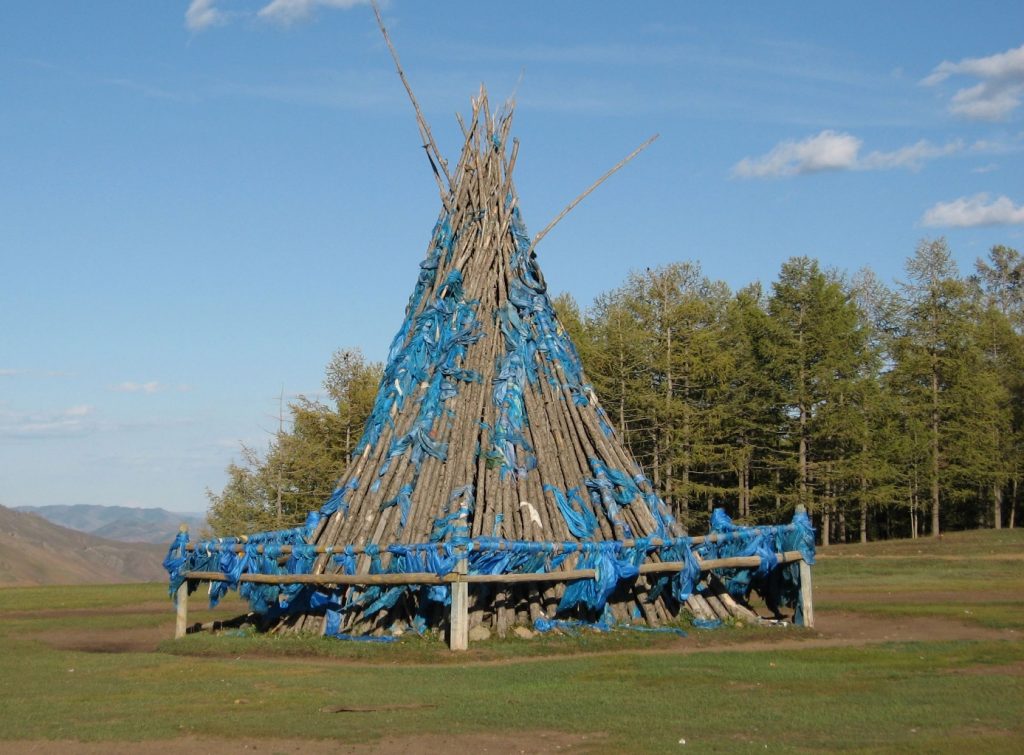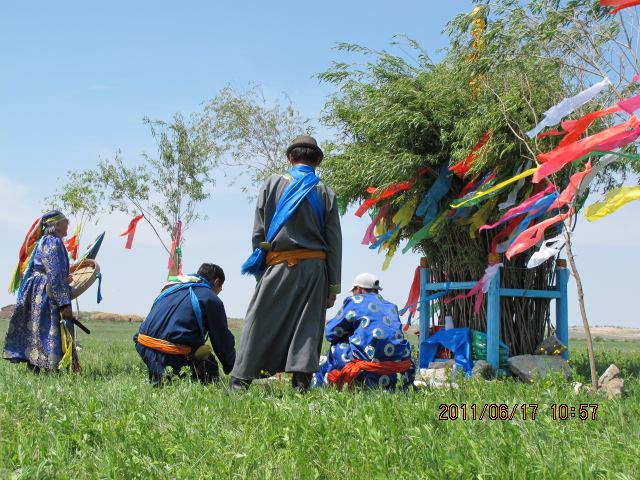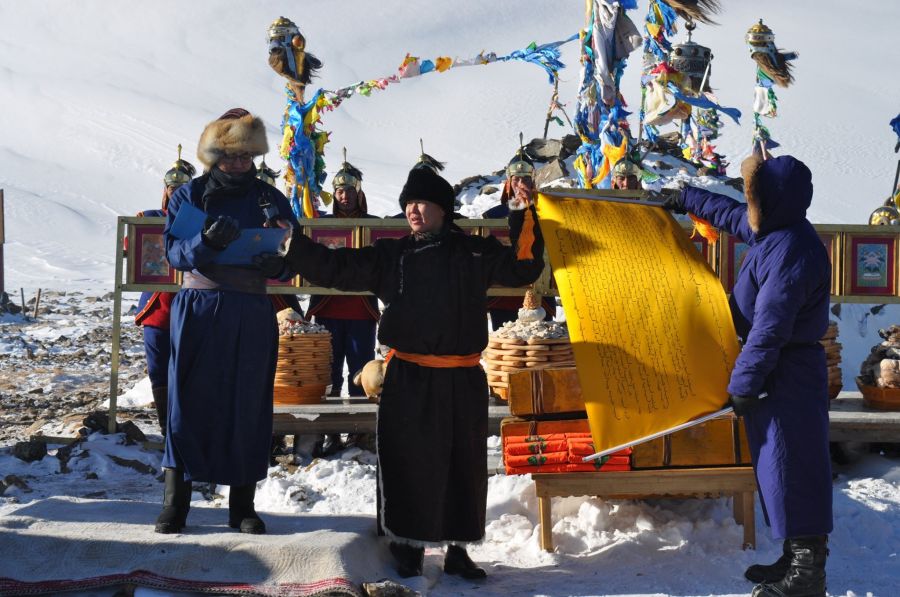According to the traditional religion of Mongolian nomads, each prominent place in the landscape has its spirit – the so-called “ruler”.
OVOOS – are used to worship these deities of Nature. The word ovoo meaning a “pile” in Mongolian, they are usually built in the form of stone heaps, but wood can also be used.

Ovoos are most often located at the top of a hill or next to a river or spring, but they can also be found in a pass or at a crossroads where they are more easily accessible.
What does an ovoo look like and what is it made from?
Ovoos come in a variety of shapes and sizes. It depends on the importance of the local spirit, the ruler, but also on their location. The more accessible an ovoo is, the bigger it gets.
The shapes and materials used for an ovoo partly depend on the traditions of each area, but there are no set rules for the construction of ovoos. The most common are heaps of stones, a kind of “teepee” made of thin wooden poles and bundles of willow branches, but we can also find brick structures. Some ovoos also have a special altar. Each passer-by will add something of their choice to the ovoo.
Probably a new element in ovoo “architecture” is the khadag – a strip of silk used in Tibet as a symbolic gift and offering. The Mongols in Mongolia prefer khadags in a light blue colour symbolizing the heaven. Khadags of five colours are used in some areas of Inner Mongolia. This refers to the Chinese symbolism of the five elements.

What types of ovoo can we distinguish?
According to thier purpose ovoos can be divided into local or regional ones, worshiping the rulers of prominent points in the landscape; road ovoos, which also serve as rest areas, family or ancestral ovoos and ovoos of national importance.

Ceremonies
In Mongolia ovoos have their place in everyday life of the nomads. Anyone can build an ovoo and perform everyday worshipping.
An ovoo can be founded simply by accumulating an initial pile of stones and praying. In some areas, sacred objects, or just symbolic gifts from the founders – coins, cereal grains, and the like – are inserted into the foundations of the ovoo.
Anyone passing by an ovoo should stop and make a small sacrifice, usually by adding a stone, and show respect by circling the ovoo, moving “in the direction of the sun.”
Mongolian nomads believe that the ruler of the place in question can punish anyone who has not shown due respect. By a flat tire for example. Therefore, before each longer expedition, the Mongols prepare enough sacrifices to secure the favor of the deities throughout the journey.
Ovoos also serve as natural temples, places suitable for more important ceremonies. These ceremonies usually take place at the beginning of summer and consist of great offerings to the spirits of the earth and water. In some areas the ceremonies consist of the sacrifice of a sheep or some other animal, while in others the worshippers sacrifice mainly dairy products, vodka, and other treats.

